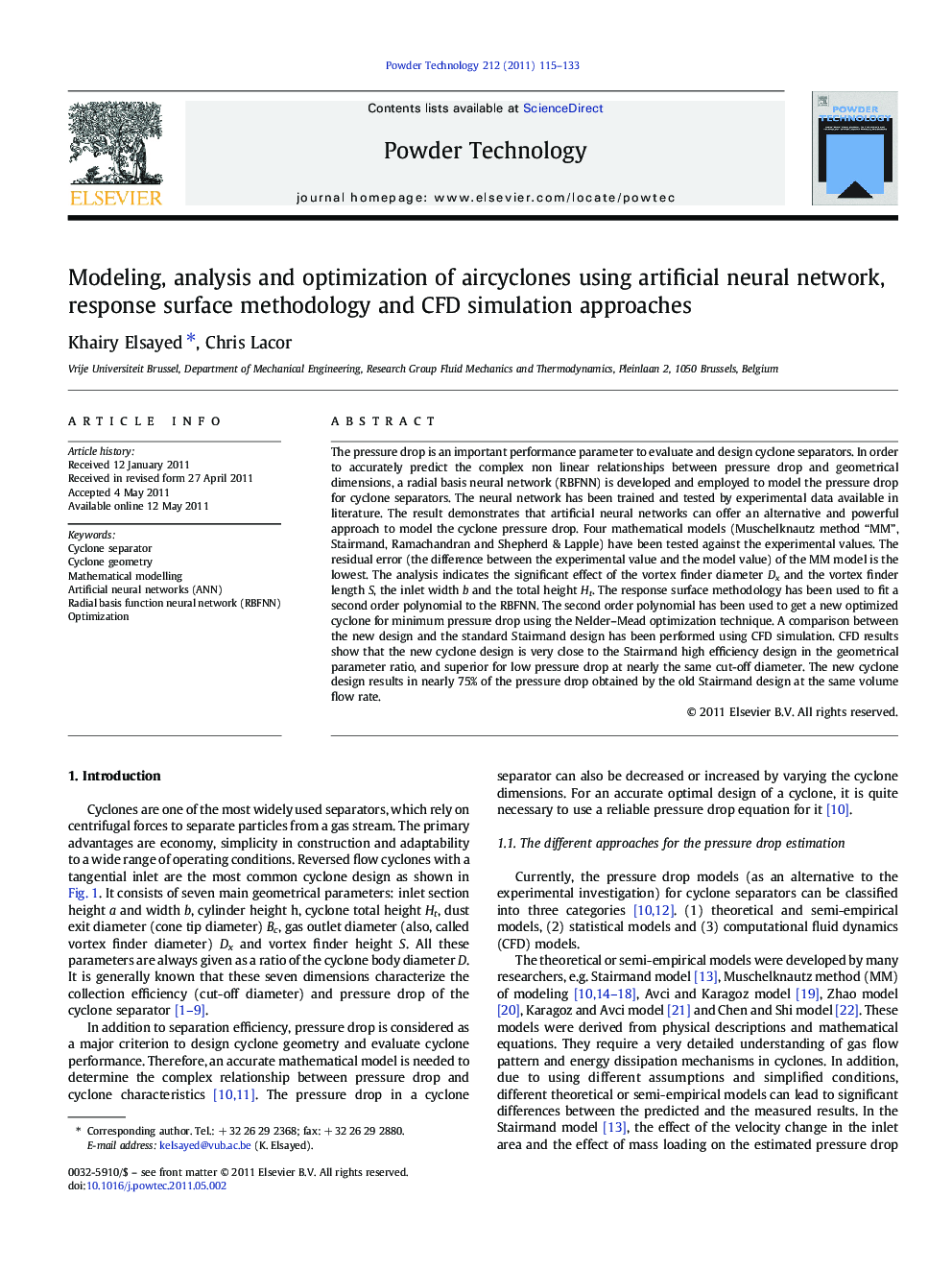| Article ID | Journal | Published Year | Pages | File Type |
|---|---|---|---|---|
| 237427 | Powder Technology | 2011 | 19 Pages |
The pressure drop is an important performance parameter to evaluate and design cyclone separators. In order to accurately predict the complex non linear relationships between pressure drop and geometrical dimensions, a radial basis neural network (RBFNN) is developed and employed to model the pressure drop for cyclone separators. The neural network has been trained and tested by experimental data available in literature. The result demonstrates that artificial neural networks can offer an alternative and powerful approach to model the cyclone pressure drop. Four mathematical models (Muschelknautz method “MM”, Stairmand, Ramachandran and Shepherd & Lapple) have been tested against the experimental values. The residual error (the difference between the experimental value and the model value) of the MM model is the lowest. The analysis indicates the significant effect of the vortex finder diameter Dx and the vortex finder length S, the inlet width b and the total height Ht. The response surface methodology has been used to fit a second order polynomial to the RBFNN. The second order polynomial has been used to get a new optimized cyclone for minimum pressure drop using the Nelder–Mead optimization technique. A comparison between the new design and the standard Stairmand design has been performed using CFD simulation. CFD results show that the new cyclone design is very close to the Stairmand high efficiency design in the geometrical parameter ratio, and superior for low pressure drop at nearly the same cut-off diameter. The new cyclone design results in nearly 75% of the pressure drop obtained by the old Stairmand design at the same volume flow rate.
Graphical abstractFigure optionsDownload full-size imageDownload as PowerPoint slideResearch Highlights► It becomes clear that neural network can be used for curve fitting of data better than other methods. ► Deep analysis for the effect of geometrical parameter on the cyclone performance. ► There is strong interaction between the vortex finder diameter and the inlet width and the cyclone total height. ► Obtaining the optimum design (geometrical ratios) of cyclone separator for minimum pressure drop. ► The CFD investigation confirms the superiority of the new design over the Stairmand design.
